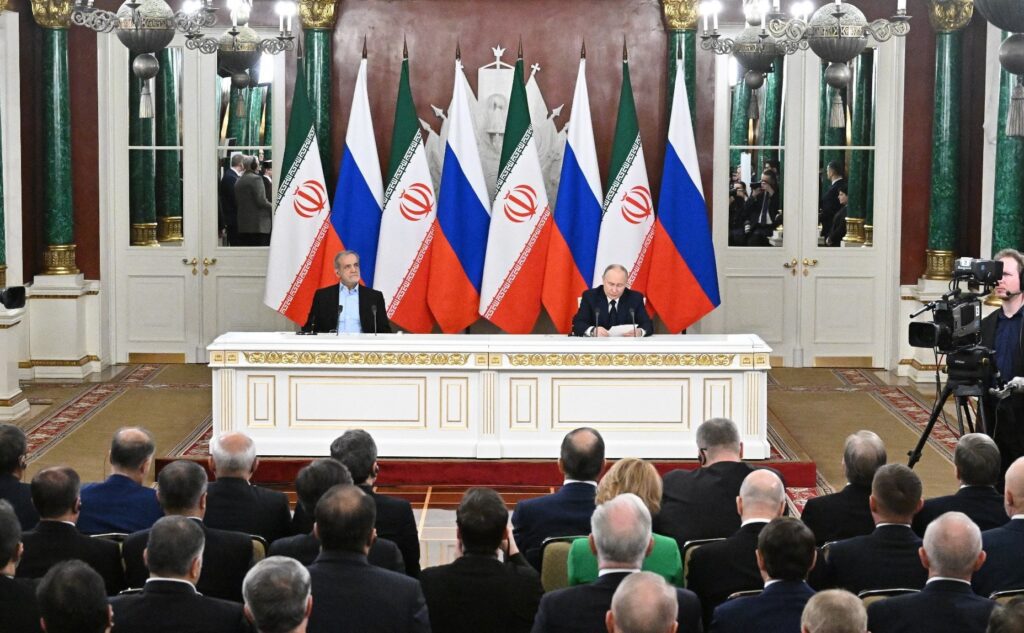In a move that reverberates through international relations, Russian President Vladimir Putin and Iranian President Masoud Pezeshkian have formalized a comprehensive 20-year strategic partnership, signaling a new era of cooperation between the two nations. The signing ceremony, held amidst a backdrop of escalating global tensions, underscores a mutual commitment to counterbalance Western influence.
Details of the Treaty:
- Security and Defense: The core of the agreement focuses on bolstering security ties, with commitments to assist each other in defense against external threats. Both nations pledge to maintain peace through diplomacy, vowing not to support separatist activities or hostile actions from their territories.
- Regional Stability: The treaty emphasizes collaboration to ensure regional stability in the Caspian, Central Asia, the Caucasus, and the Middle East, with both countries agreeing to resist foreign interference.
- Economic and Trade Relations: Economically, the agreement aims to deepen trade links, particularly by conducting transactions in national currencies to sidestep Western sanctions. There’s a strong push towards economic integration, including cooperation in energy, mining, and infrastructure, notably the North-South Transport Corridor.
- Scientific and Technological Collaboration: Beyond traditional sectors, the treaty opens doors for joint ventures in peaceful nuclear energy, space exploration, and other scientific fields, aiming to leverage each other’s technological advancements.
- International Stance: Both nations have declared their commitment to multilateralism, advocating for a multipolar world order through engagements in platforms like the SCO and EAEU.
Global Implications:
This treaty arrives at a time when the geopolitical landscape is increasingly fraught with challenges. Analysts view this partnership as a strategic counterweight to Western, particularly U.S., policies in the region. The agreement could lead to:
- Shift in Balance of Power: By aligning more closely, Russia and Iran could alter the strategic balance in Eurasia, potentially influencing the policies of neighboring countries and global powers.
- Economic Realignments: The move towards de-dollarization in trade could encourage other nations to follow suit, impacting global financial systems.
- Diplomatic Tensions: The pact might escalate tensions with Western countries, particularly those concerned about the expansion of Russian and Iranian influence.
- Regional Dynamics: The focus on regional security could lead to new alliances or conflicts as other regional players respond to this strengthened Russia-Iran axis.
The international community has responded with a mix of apprehension and strategic recalibration. While some see this as a necessary balance against unipolar hegemony, others worry about the implications for arms control, human rights, and global peace.






